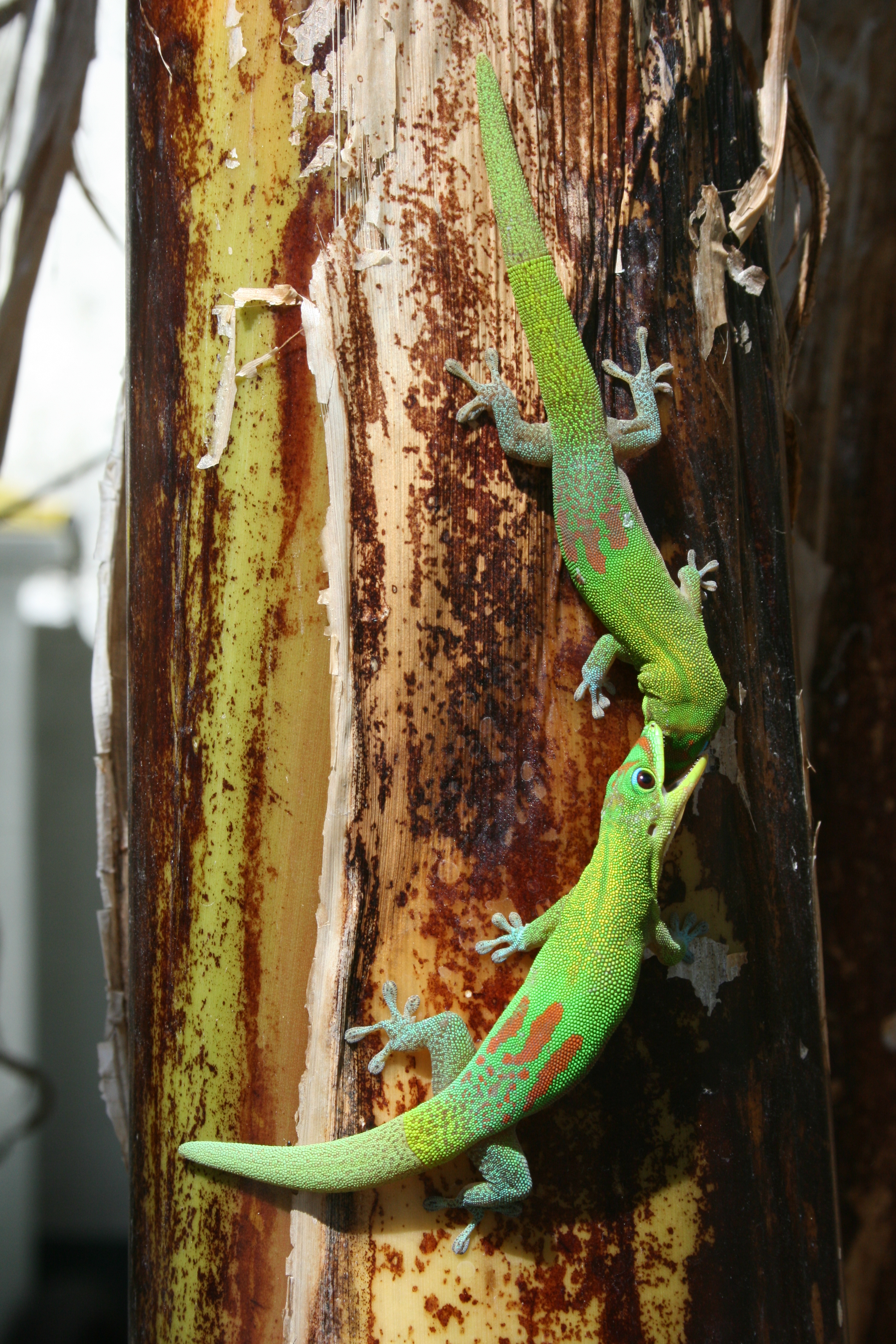Gold dust day gecko on:
[Wikipedia]
[Google]
[Amazon]
The gold dust day gecko (''Phelsuma laticauda'') is a diurnal species of

 These day geckos feed on various insects and other invertebrates, and are capable of eating other smaller lizards. They also eat soft, sweet fruit and pollen and nectar from flowers, often congregating in groups of many individuals to feed off of one plant.
These day geckos feed on various insects and other invertebrates, and are capable of eating other smaller lizards. They also eat soft, sweet fruit and pollen and nectar from flowers, often congregating in groups of many individuals to feed off of one plant.
 The males of this species are rather aggressive. They do not accept other males in their territory. In captivity, where the females cannot escape, the males may also seriously wound a female.
The males of this species are rather aggressive. They do not accept other males in their territory. In captivity, where the females cannot escape, the males may also seriously wound a female.
gecko
Geckos are small, mostly carnivorous lizards that have a wide distribution, found on every continent except Antarctica. Belonging to the infraorder Gekkota, geckos are found in warm climates. They range from .
Geckos are unique among lizards ...
. It lives in northern Madagascar
Madagascar, officially the Republic of Madagascar, is an island country that includes the island of Madagascar and numerous smaller peripheral islands. Lying off the southeastern coast of Africa, it is the world's List of islands by area, f ...
, the Comoro Islands
The Comoro Islands are a group of volcanic islands in the Mozambique Channel, an arm of the Indian Ocean lying between Madagascar and the African mainland. Three of the islands form the Union of the Comoros, a sovereign nation, while Mayotte bel ...
, and the Mascarene Islands
The Mascarene Islands (, ) or Mascarenes or Mascarenhas Archipelago is a group of islands in the Indian Ocean east of Madagascar consisting of islands belonging to the Republic of Mauritius as well as the French department of Réunion. Their na ...
; it has also been introduced to Hawaii
Hawaii ( ; ) is an island U.S. state, state of the United States, in the Pacific Ocean about southwest of the U.S. mainland. One of the two Non-contiguous United States, non-contiguous U.S. states (along with Alaska), it is the only sta ...
and other Pacific islands. It is primarily an arboreal
Arboreal locomotion is the locomotion of animals in trees. In habitats in which trees are present, animals have evolved to move in them. Some animals may scale trees only occasionally (scansorial), but others are exclusively arboreal. The hab ...
species which can be found in tropical forests and may also associate with human dwellings. The gold dust day gecko feeds on insect
Insects (from Latin ') are Hexapoda, hexapod invertebrates of the class (biology), class Insecta. They are the largest group within the arthropod phylum. Insects have a chitinous exoskeleton, a three-part body (Insect morphology#Head, head, ...
s and nectar
Nectar is a viscous, sugar-rich liquid produced by Plant, plants in glands called nectaries, either within the flowers with which it attracts pollination, pollinating animals, or by extrafloral nectaries, which provide a nutrient source to an ...
.
One subspecies
In Taxonomy (biology), biological classification, subspecies (: subspecies) is a rank below species, used for populations that live in different areas and vary in size, shape, or other physical characteristics (Morphology (biology), morpholog ...
is recognized (in addition to the nominate one): ''Phelsuma laticauda angularis
''Phelsuma laticauda angularis'' Mertens, 1964 is a diurnal subspecies of geckos. It lives in northern Madagascar and typically inhabits different trees and houses. The Gold dust day gecko feeds on insects and nectar.
Description
This lizard ...
''.
Description
This lizard can reach a total length of 3.9–5.1″ (10–13cm). The body colour is a bright green or yellowish green or rarely blue. Typical for this day gecko are the red speckles on the neck and the upper back. There are three rust-coloured transverse bars on the snout and head; the upper part of the skin around the eye is blue. On the lower back there are three tapering red bars. The tail is slightly flattened. The under side is off-white. Juveniles lack the red colourations and the tail and limbs appear off-white.Diet

 These day geckos feed on various insects and other invertebrates, and are capable of eating other smaller lizards. They also eat soft, sweet fruit and pollen and nectar from flowers, often congregating in groups of many individuals to feed off of one plant.
These day geckos feed on various insects and other invertebrates, and are capable of eating other smaller lizards. They also eat soft, sweet fruit and pollen and nectar from flowers, often congregating in groups of many individuals to feed off of one plant.
Behavior
Reproduction
The females lay 1–2 eggs. At a temperature of 28 °C, the young will hatch after approximately 40–45 days. The juveniles measure 55–60 mm. They should be kept separately since the juveniles can be quite quarrelsome. Sexual maturity is reached after 10–12 months.Captivity
This gecko is occasionally kept as a pet; with good care, this species may live up to 15 years.References
* * * {{Taxonbar, from=Q616510 Phelsuma Reptiles of the Comoros Reptiles of Madagascar Taxa named by Oskar Boettger Reptiles described in 1880